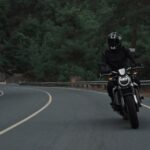Most of today’s technological advancements are based on semiconductor material which is used mostly in computer chips. However, semiconductors are also used for the operation of LED-powered flashlights. The unique approach and design of this type of “bulb” has taken the world by storm and it is expected to save 190 terawatts of electricity per year, which will supposedly reach an astonishing $15 billion by 2030. What was once a futuristic product, today it has become a standard that offers more features than ever before. Of course, there are many more benefits that LED flashlights offer, thanks to their multitude of features. Let’s talk details.

Features
- With the majority of flashlights today you’ll get at least three different lighting modes – low, medium and high and some will have an extra option called ‘turbo mode’. The modes of an LED flashlight are measured in lumens as the level of output or brightness with the turbo mode on a standard flashlight is from 600 lm to 800 lm. The low mode is usually between 10lm to 30lm and the medium mode between 100lm and 200lm. Some flashlight may come with a moonlight mode that begins at 1lm. And although a couple of years ago, a 100lm flashlight was considered a high-end device, today you’ll need at least 200lm if you want to have a decent device.
- Several years ago, flashlights only had one switch on their back, however, more and more manufacturers have started manufacturing models with a side switch as well. Some models only have a side switch while others have two switches – one is reserved for the modes and the other for the usual on and off functions.

- What is interesting about flashlight batteries is that they are specially made LI-ion batteries for the use with flashlights. While standard AA and AAA batteries are still used, today nothing can replace rechargeable NiMH batteries. A quality LED flashlight will also have a USB port for the charging process which makes things even more convenient than getting the battery out and charging it on a different device. Of course, the latter doesn’t apply for flashlights with Li-Ion batteries.
- Every flashlight won’t have the same type of LED, so it’s important to be aware of certain factors that will help you recognize the quality of one. A solid flashlight will have an LED that can produce a nice and smooth beam of light that has an ample spill and a distinctively bright center-spot. Flashlights that use older LED lights called ‘clearance lights’ can’t produce this type of light as good and as efficiently but they are still a pretty good and popular option too.
- You may not be after a tactical flashlight, but it’s important to have some sort of certified waterproof rating on your flashlight. This will make sure it keeps running when you drop it in a puddle or when it’s raining, which will depend on its IPX rating. Therefore, the casing of the flashlight needs to be made of aluminum together with rubberized or plastic reinforcement in order to provide the best protection. Aluminum is a rust-proof material that’s also prone to scrapes, impacts, bumps and all sorts of drops.

- An important feature of an LED flashlight is the navigation light which ranges from 10lm to 50lm and provides enough light to let you roam through the dark while using as little power as possible. This can be very useful in cases when there’s a power outage before the sun goes down, so you’ll rest assured that you have a bright enough light that will last you for several hours or more, depending on the quality of the flashlight.
- While having a bright light may be great for everyday use, however, in case of an emergency it won’t be able to attract attention without the special modes. Beacon, strobe, and SOS are the top special modes that are very desirable in a flashlight as they can be true a lifesaver in worst-case scenarios.
- An adjustable control ring will give you more power over how much light you want the flashlight to use with the strobe and SOS modes. This way you can adjust to a dimmer or brighter light output smoothly instead of just being able to switch from three standard modes.



